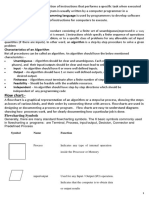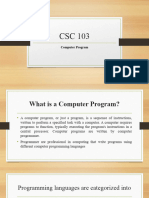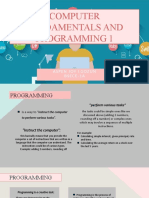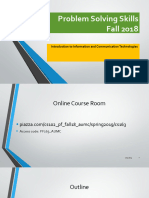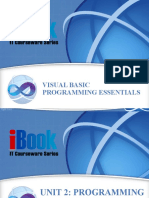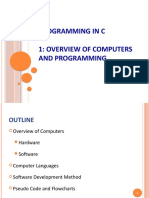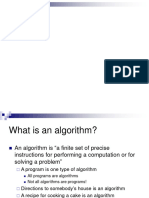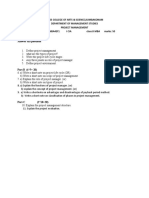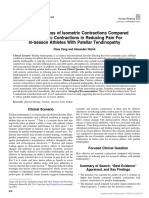0% found this document useful (0 votes)
34 views37 pagesI1100 Chap4 Software and Algorithm
The document provides an introduction to software and algorithms, explaining the distinction between the two and outlining various software categories, including systems and application software. It also discusses copyright status related to software licenses, such as open source, freeware, and commercial software. Additionally, the document covers flowcharts and pseudo-code as methods for describing algorithms.
Uploaded by
jimimjimin13Copyright
© © All Rights Reserved
We take content rights seriously. If you suspect this is your content, claim it here.
Available Formats
Download as PDF, TXT or read online on Scribd
0% found this document useful (0 votes)
34 views37 pagesI1100 Chap4 Software and Algorithm
The document provides an introduction to software and algorithms, explaining the distinction between the two and outlining various software categories, including systems and application software. It also discusses copyright status related to software licenses, such as open source, freeware, and commercial software. Additionally, the document covers flowcharts and pseudo-code as methods for describing algorithms.
Uploaded by
jimimjimin13Copyright
© © All Rights Reserved
We take content rights seriously. If you suspect this is your content, claim it here.
Available Formats
Download as PDF, TXT or read online on Scribd
/ 37


